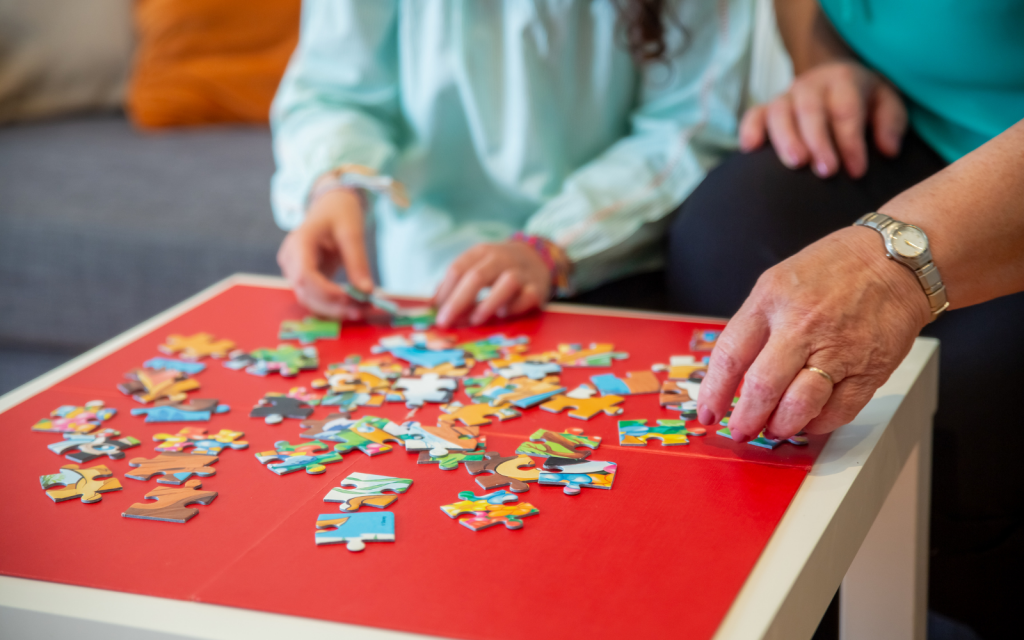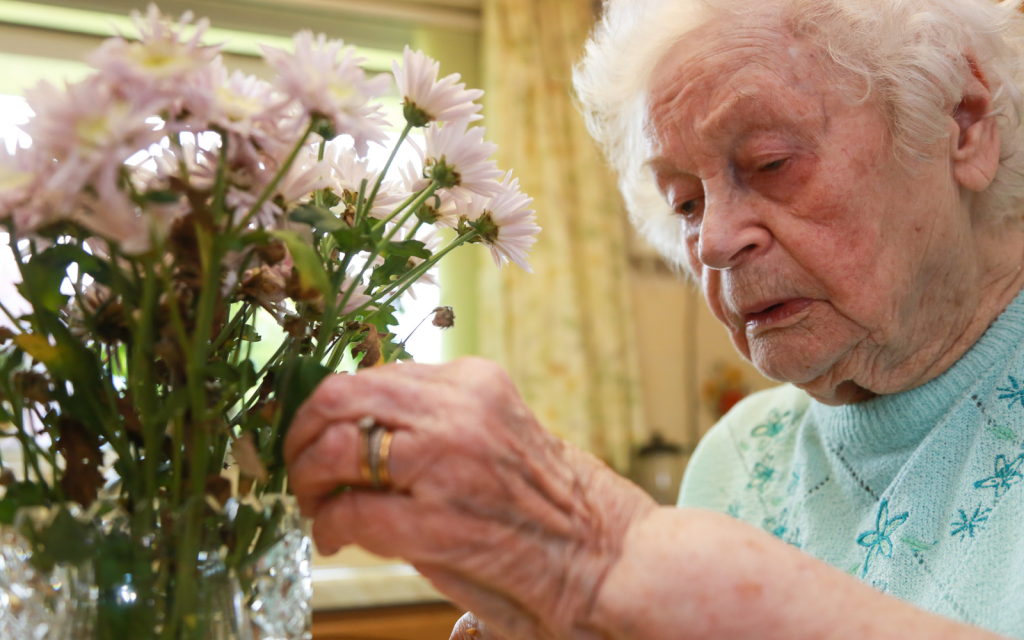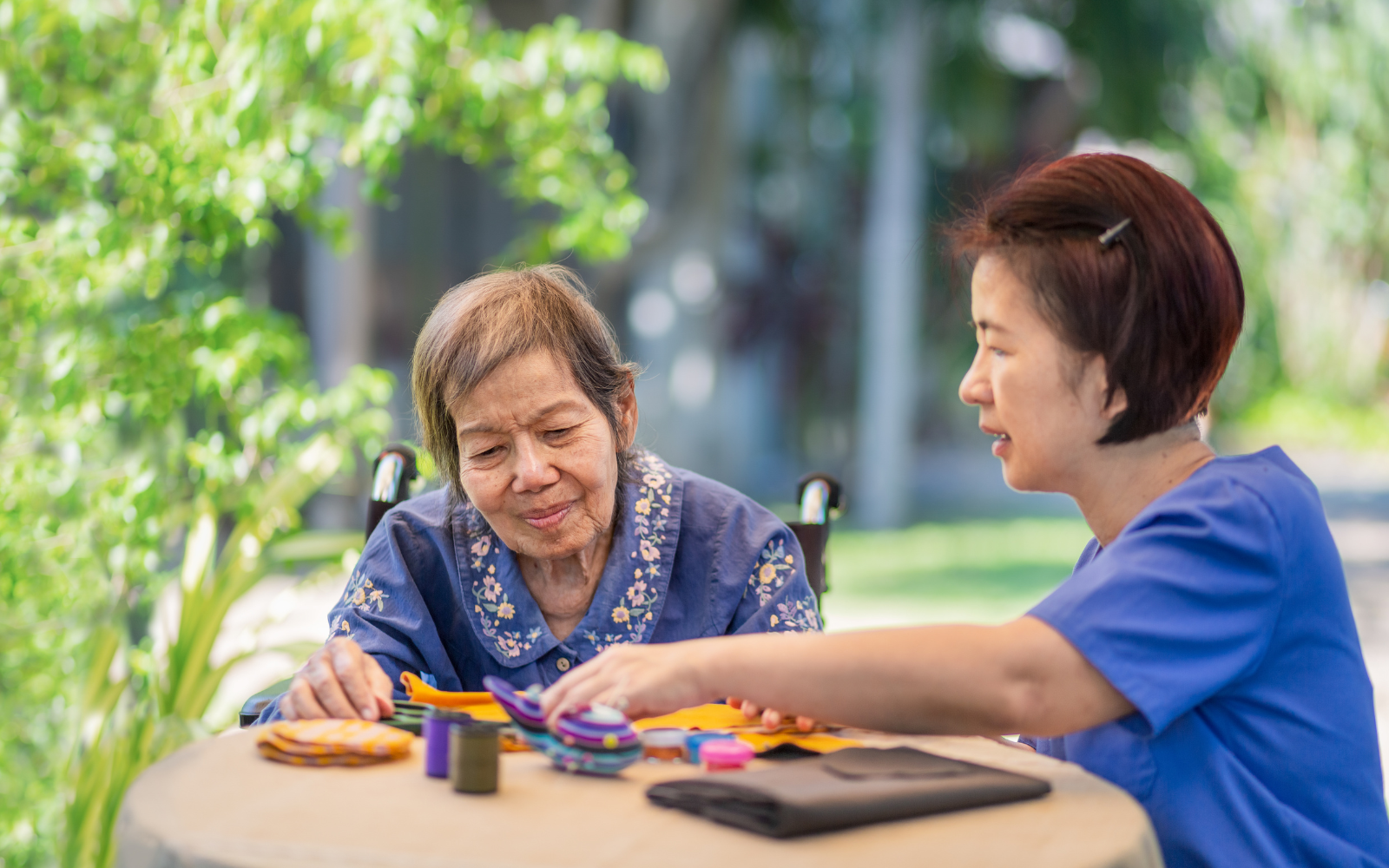Living with dementia poses its own set of challenges for the affected individual and their caregivers. However, engaging in stimulating activities not only improves cognitive function but also contributes significantly to enhancing mood and overall quality of life. While there are a plenty of guides on activities to engage a person with Dementia, this guide delves deep into ten meticulously chosen activities tailored for them, ensuring a blend of recreation, nostalgia, and cognitive stimulation. We list down what is needed, how to carry out these activities and how do these activities for people with dementia benefit them.
1. Personalized Photo Albums: Reliving Precious Moments

What you need: A sturdy album, a selection of printed photos from various life stages, adhesive labels or markers.
How to engage: Collaborate with the individual to assemble the photo album. Use adhesive labels to jot down names, dates, or a brief description of the event.
Benefits: Photo albums are a bridge to the past. They trigger buried memories, initiate heartwarming conversations, and act as a comforting presence on challenging days.

2. Jigsaw Puzzles with Large Pieces: Rediscovering Patience and Focus

What you need: Large-piece jigsaw puzzles, preferably with vivid images.
How to engage: Spread out the pieces on a table and guide the individual in beginning with the edges. Celebrate small achievements, such as completing a section.
Benefits: Puzzles fine-tune hand-eye coordination, sharpen spatial recognition, and offer a rewarding experience upon completion.
3. Flower Arranging: A Symphony of Colors and Fragrances

What you need: Fresh flowers (choose a variety), a vase, water, and a pair of scissors.
How to engage: Allow the person to select their favorite flowers, snip the stems, and artistically place them in the vase.
Benefits: This activity is a sensory delight. It stimulates the olfactory senses, promotes creativity, and instills a sense of accomplishment.
4. Sensory Bags: A Tactile Exploration
What you need: A sensory bag filled with a variety of items that cater to different senses. This can include textured materials (like soft fabrics or ribbons), aromatic sachets, colorful trinkets, small musical instruments, or personal mementos.
How to engage: Encourage the individual to touch, smell, listen, or observe each object at their own pace. Guide their interaction by describing items, sharing memories, or asking open-ended questions.
Benefits: Sensory bags provide tactile and sensory stimulation, reduce agitation, promote focus and offer a means of non-verbal communication.
5. Memory Boxes: Nurturing Nostalgia

What you need: A medium-sized box, personal mementos, and trinkets from the past.
How to engage Carefully curate items like old letters, jewelry, or small tokens that resonate with their past. Periodically explore the contents together, letting them lead the conversation.
Benefits: Memory boxes are time capsules. They not only promote reminiscing but also reinforce the individual’s rich personal history and identity.
6. Simple Cooking Projects: Culinary Adventures

What you need: Simple, familiar recipes and prepped ingredients.
How to engage: Begin with simple recipes like making a fruit salad or spreading jam on toast. While ensuring their safety, give them the freedom to participate. For more involved recipes, let them take on tasks such as stirring, pouring, or putting ingredients together.
Benefits: Cooking is therapeutic. It engages multiple senses, from the smell of herbs to the taste of the finished dish, and fosters a heartwarming sense of accomplishment.
7. Listening to Personalized Music Playlists: Sonic Journeys

What you need: Comfortable headphones and a digital music player.
How to engage: Assemble a playlist of their cherished songs or hits from their youth. Let them lose themselves in the melodies and watch for reactions. Some might even evoke dance movements or humming along.
Benefits: Music is a universal healer. It reaches parts of the brain others can’t, evoking emotions, soothing agitation, and uplifting spirits.
8. Scented Hand Massages: The Touch of Serenity

What you need: Non-allergic fragrant lotions or oils, such as lavender, chamomile, or vanilla.
How to engage: Pour a modest amount of the chosen lotion/oil on their hands and gently massage, allowing the fragrance to fill the room.
Benefits: Massages are profoundly relaxing, offering sensory stimulation, improved circulation, and a cherished moment of human connection.
9. Simple Gardening Tasks: Nurturing Life
What you need: Indoor potted plants or an accessible garden space, soil, seeds, and a watering can.
How to engage: Depending on their mobility and interest, allow them to engage in tasks like watering, weeding, or potting new plants.
Benefits: Gardening is therapeutic. Engaging with nature, feeling the soil, and watching plants grow boosts mood, instills responsibility, and offers lessons in patience.
10. Reading Aloud: Journeying Through Words

What you need: Books or magazines that resonate with their interests or life experiences.
How to engage: Find a cozy spot, read aloud, pausing occasionally to discuss or explain. Expressive reading can make it more engaging.
Benefits: Reading stimulates cognitive function, enhances vocabulary, fosters bonding, and offers a calming experience.
Each of these activities designed for people with dementia is more than just a pastime; it’s a therapeutic engagement. While it’s paramount to focus on the individual’s comfort and preferences, it’s equally vital to introduce new activities, ensuring a balance between familiarity and novelty. With patience, love, and understanding, these activities can significantly enrich the lives of those living with dementia.

